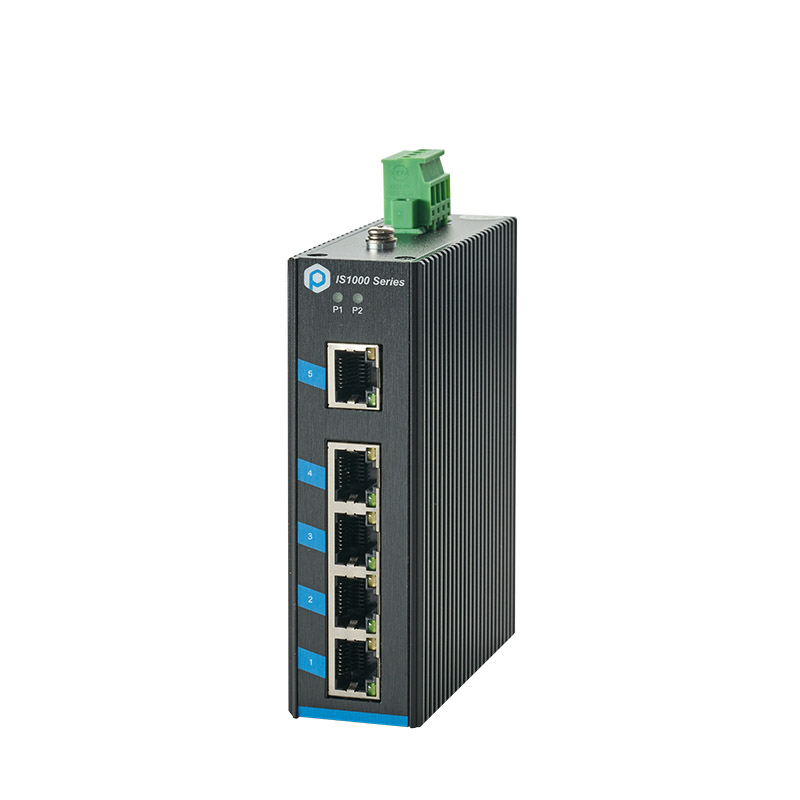With the continuous development of technology, factors such as high-speed transmission, large capacity data transmission, and changing industrial environments may affect the future performance of industrial Ethernet switches (also known as industrial network switches). This may pose challenges to future industrial Ethernet switches. The following are five challenges that may affect the development of industrial Ethernet switches in the future.
Site industrial environmental conditions:
In addition to many particularly harsh environments such as coal mines and ships, industrial environments also have special requirements for EMI (electromagnetic compatibility), temperature, humidity, and dust prevention. This is why various environmental conditions can pose challenges to the operation of industrial Ethernet switches. Static electricity and discharge caused by high-voltage transmission, transmission interference shocks and vibrations caused by surges or fast transient electromagnetic radiation due to high power consumption and low surge resistance, may damage transmission lines and ports in industrial Ethernet switches. Extremely high or low temperatures can lead to performance errors in industrial network switches, humidity, chemical exposure, and other factors that may cause sudden switch failure.
Network redundancy and immediate recovery:
In industrial networks, multiple industrial Ethernet or serial to Ethernet network connections are very complex, so the reliability of communication networks becomes extremely important. In order to improve the reliability of communication networks, it is necessary to have network redundancy functions when using industrial network switches. This allows you to use Ethernet with additional connections, so if one path between two points on the network fails, you can use another path to deliver messages. If one link or industrial Ethernet switch fails, the other link or industrial Ethernet switch can take over to prevent unnecessary downtime. Therefore, industrial network switches with higher redundancy and instant recovery will be needed in the future to protect large capacity networks.

Increase the use of bandwidth demanding devices:
The bandwidth requirements of modern large capacity networks are increasing. Currently, data is transmitted at Gigabit Ethernet speeds. In a large capacity network, nearly 1000 megabits of data are transmitted through the network at one time. This transmission rate may vary in the future, which may pose a challenge to maintaining bandwidth requirements. If bandwidth is insufficient, industrial Ethernet switches may face challenges such as data traffic. Matching the routing and switching capacity of industrial Ethernet switches can be challenging based on bandwidth and transmission rates.
Manageability of large capacity and multi-layer networks:
Due to the demand for transmission capacity, the complexity of Ethernet networks is increasing. Large capacity networks are typically developed in different topologies or hierarchies. Such a network includes a core layer, a distribution layer, and an access layer. However, as the transmission demand increases, the number of layers also increases. For Ethernet network management on such a large scale, the manageability of industrial Ethernet switches can be challenging. Managing network activity can be challenging if switches are unable to route, exchange, and distribute data in complex design and operational compatibility.
Strict requirements for safety:
Industrial networks face threats such as unauthorized intrusion and data theft. Due to the openness of industrial Ethernet switches, we have to consider the factor of network security in the process of establishing automated networks. When selecting equipment, users should select industrial Ethernet switches with VLAN functions to facilitate the functional division of the network. Through VLAN partitioning, we can group and isolate devices within the network based on their functions to avoid malicious human damage or misoperation. At the same time, users can use the 802.1x function in the switch to authorize and license devices that need to access the network, in order to distinguish between legitimate users and illegal users.
In the future, if advanced security protocols are not followed, there may be a higher risk of data loss in large capacity networks. A virtual private network (VPN) will need to be implemented using firewalls, access control lists (ACLs), data encryption, and port user access. Implementing these functions can be challenging in the future.
The above briefly discusses the five major challenges that industrial Ethernet switches may face, but without high-quality and first-class performance parameters, it is difficult to protect the security of industrial Ethernet switches and networks. This is why we should purchase high-quality industrial network switches from reliable manufacturers or suppliers.
Contact: sales
Phone: 18688787693
E-mail: sales@hsindustrialswitch.com
Add: Room 608, Building B,GaoXinQi TEC Park,Baoan District, ShenZhen,China